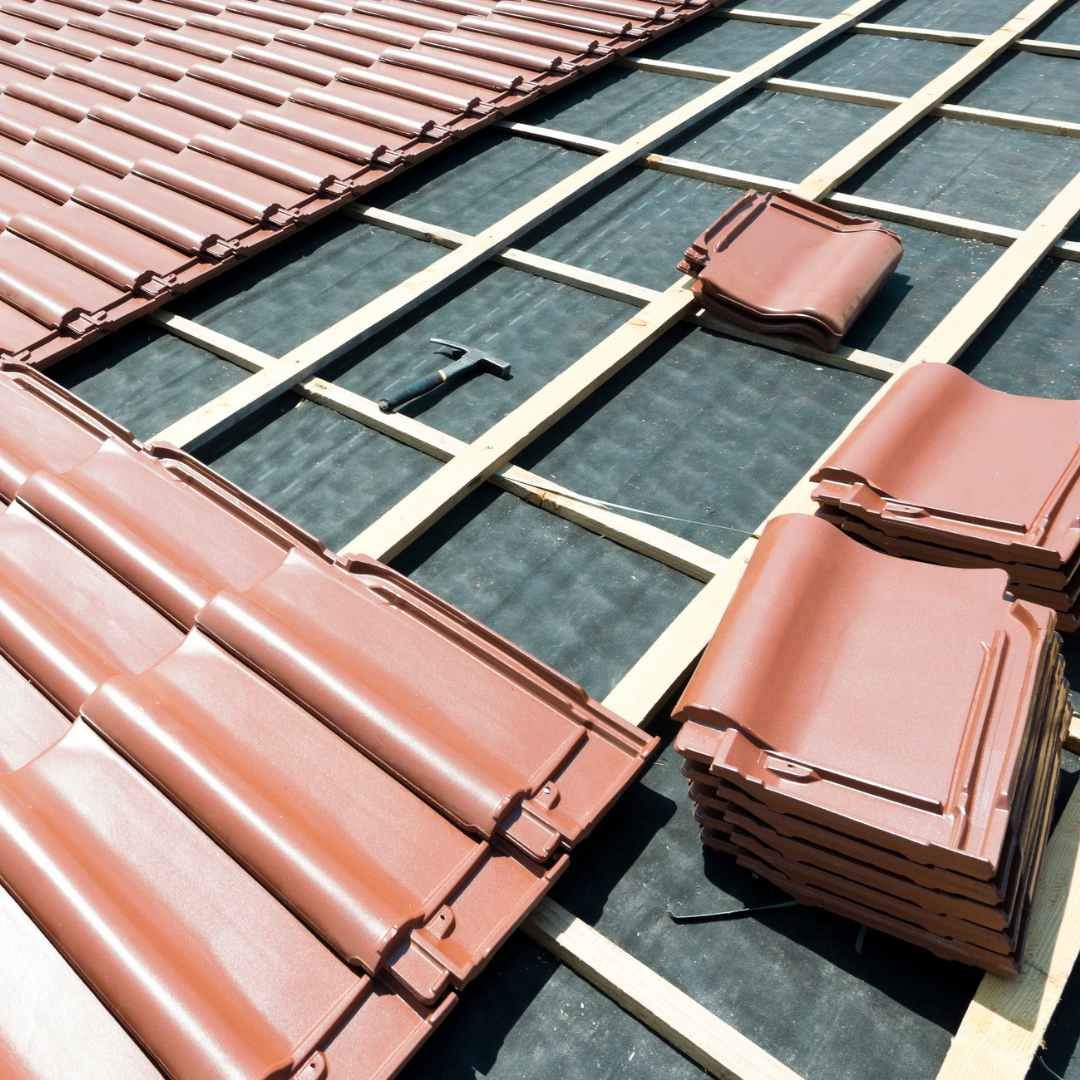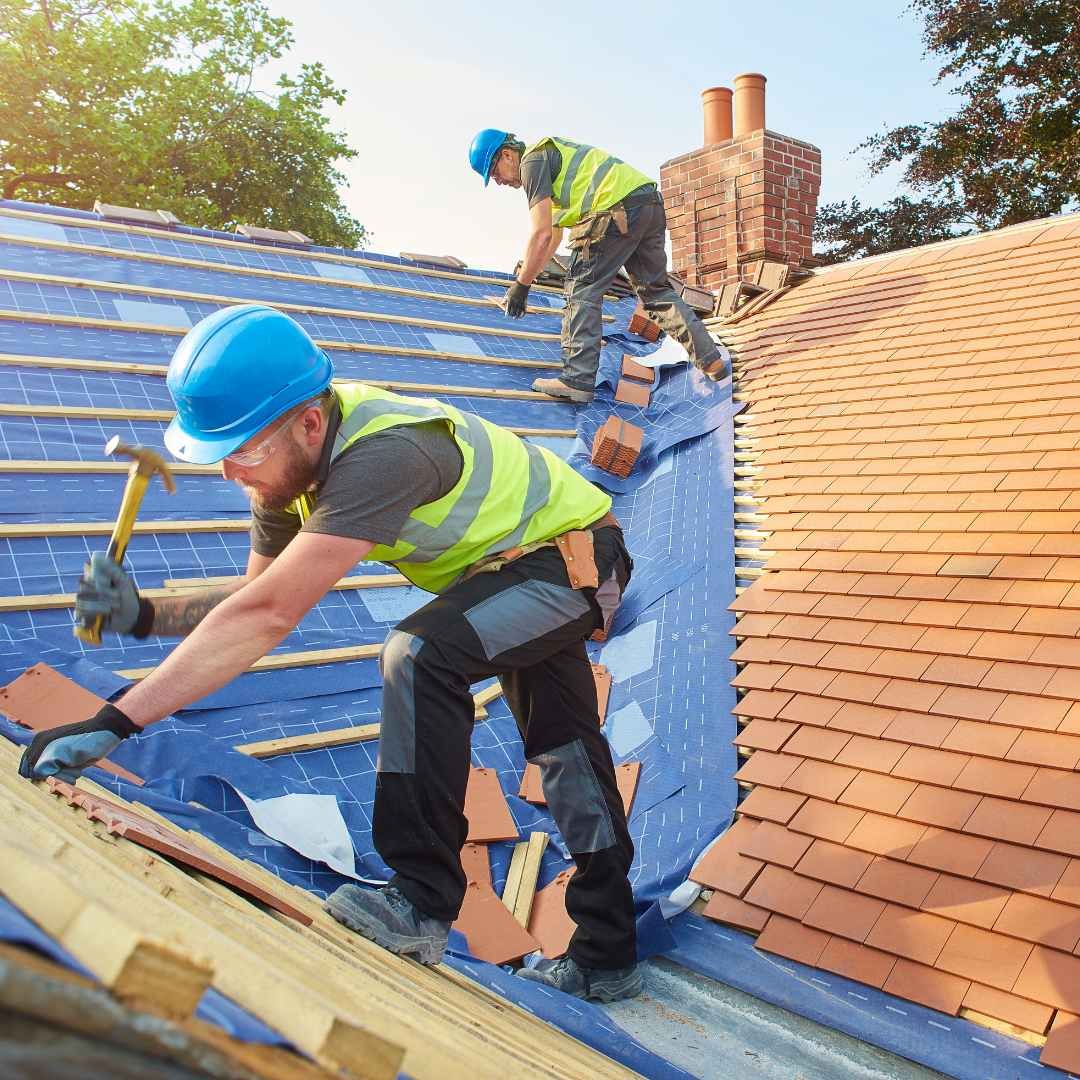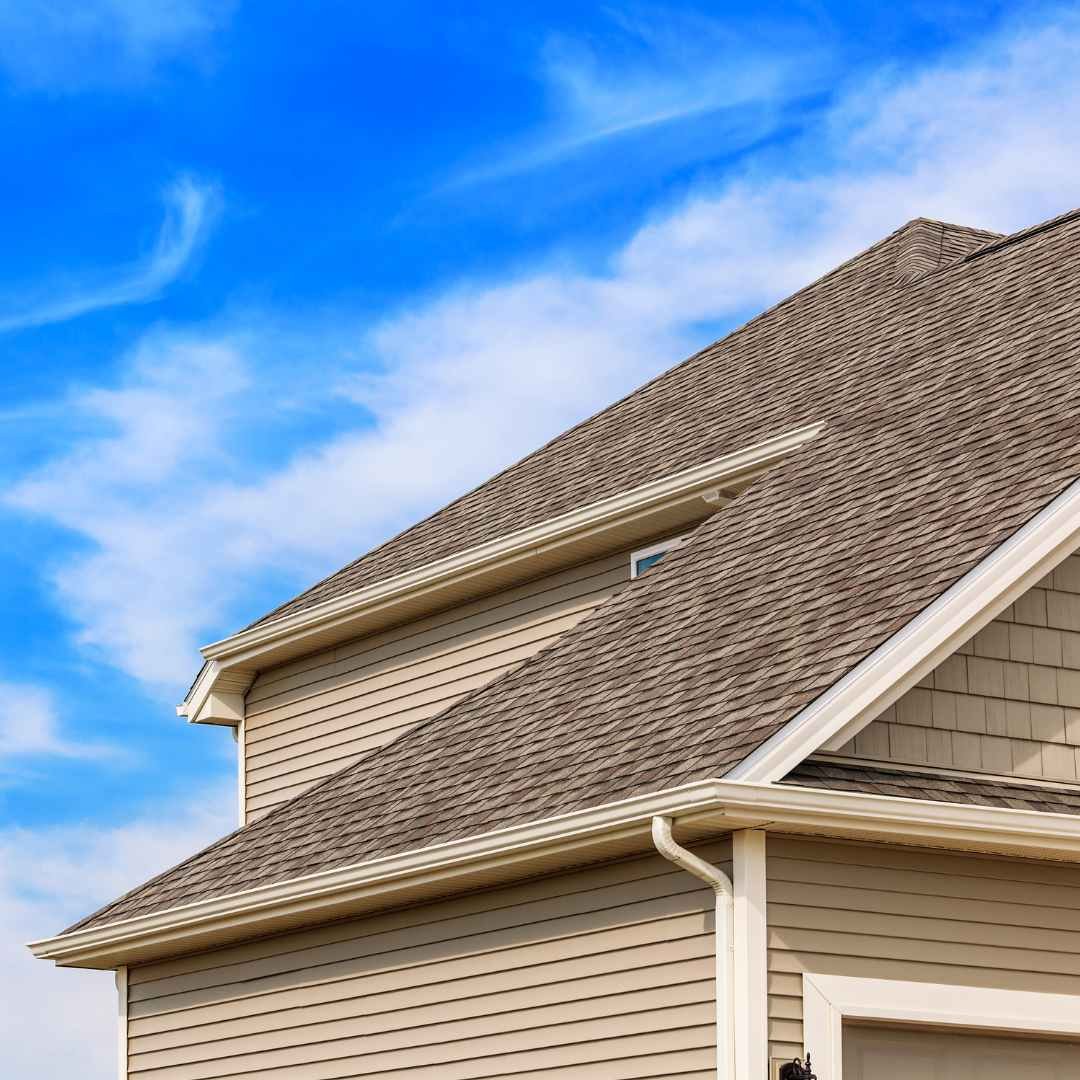
How Much Does Roof Replacement Cost?
Examining the Costs to Replace a Roof
Is it Time for a Roof Replacement?
As a homeowner, it's essential to understand the basics of roofing costs. A roof is one of the most important components of a house, protecting it from the elements and providing security for you and your family. However, over time, roofs battle wear and tear and need to be replaced. Let's explore everything you need to know about roof replacement, from the factors that affect them to the different roof materials available and how much does it cost.
Cost Factors When You Need a New Roof
Factors that affect the cost can vary including, materials, labor, size, slope of your roof, and geographic location. By considering these factors, homeowners can estimate the overall cost of their home improvement project.
Cost by Roof Materials & Type of Roof
The choice of roofing materials is a significant cost factor and is calculated by how much roofing square feet are involved. Different materials come at varying price points, from affordable asphalt roof shingles to high-end options like slate or copper. Here are some commonly used roofing materials and their average costs:
-

Asphalt Shingles
The most popular and cost-effective option, basic asphalt shingles cost around $2 to $4 per square foot.
-

Metal Roofing
Durable and long-lasting, with prices ranging from $5 to $15 per square foot.
-

Wood Shakes or Shingles
Aesthetically pleasing but more expensive, with a price range of $6 to $12 per square foot.
-

Slate or Clay Tile Roof
High-end materials that can cost between $10 to $30 per square foot.
-

Synthetic Materials
An affordable alternative to natural materials, with prices ranging from $3 to $8 per square foot.
Labor Costs
Labor costs make up a significant portion of the total cost. Hiring a professional ensures a high-quality installation and reduces the risk of future issues. Labor typically ranges from $2 to $7 per square foot, depending on the complexity of the project, location (areas with a higher cost of living), and contractor expertise.
Roof Size
The size of the roof directly impacts the cost of materials and labor. Larger roofs require more materials and take longer to install, resulting in higher costs. On average, roof replacements for homes with 1,000 to 3,000 square feet can cost between $4,000 to $16,000.
Geographic Location
The geographic location of a home can influence the cost too. Factors such as local labor rates, material availability, and weather conditions can add to the cost of your home's roof. For example, areas prone to severe weather events may require more durable materials, increasing the overall cost.
“How Much Does it Cost Calculation”
To calculate the cost, homeowners should consider the specific factors mentioned above and obtain multiple quotes from reputable contractors. Here is a step-by-step guide to help estimate the cost:
Determine the size of your roof by measuring the square footage.
Research the average cost of materials based on your preferred roofing material.
Multiply the square footage by the cost per square foot of materials.
Calculate labor by multiplying the square footage by the cost of labor per square foot.
Add the material cost and labor total to obtain the final estimated cost.
It's important to note that these are general estimates, and prices can vary based on individual circumstances and specific project requirements. Obtaining multiple quotes and consulting with roofing professionals will provide a more accurate cost estimation.
Additional Costs to Consider
In addition to materials and labor, there are other expenses to consider when budgeting for your project. These additional costs can impact the overall price of the project.
Old Roof Removal
In most cases, roofers are required to remove the existing roof before installing a new one. The cost of removing and disposing of the old roof may cost from $1 to $5 per square foot for the typical roof.
Roof Pitch
The pitch, or slope, can also affect the cost. Steeper roofs require additional safety precautions and may require specialized equipment, resulting in higher costs.
Underlayment Repair
The contractor may need to repair any damage to the underlayment, which is the water-resistant barrier beneath the shingles and above the roof sheathing. Repairing the underlayment ensures a solid foundation for the new roof, and may incur additional costs.
Additional Projects
When replacing a roof, homeowners may also consider completing other adjacent projects simultaneously, such as updating gutters, trim, soffits, or installing skylights. While these projects increase the overall cost, they can save time and money in the long run.
Roof Features
Roof features such as chimneys, skylights, and ventilation systems can add complexity to the process. These features may require additional flashing, waterproofing, or specialized installation techniques, resulting in increased costs.
Determining the Need for Roof Replacement
Determining whether it's time for a new roof is crucial in maintaining the integrity of your home. Generally, if you have a roof that's damaged in an area under 100 square feet, repair may be the way to go. Here are some symptoms of a roof nearing the end:
Missing or damaged shingles: Significant damage to the shingles, such as curling, cracking, or missing pieces, may indicate it's time for a roof replacement.
Water leaks: Persistent leaks, water stains, or signs of water damage inside the home suggest roof issues that require attention.
Age of the roof: Most roofs have a lifespan of 20 to 25 years. If your roof is nearing the end or exceeding this age, it may be time for replacement.
Sagging or drooping roof: A sagging or drooping roof is a clear sign of structural issues and should be addressed immediately.
Mold or mildew growth: Excessive mold or mildew growth on the roof or in the attic indicates moisture problems that can lead to further damage.
If you suspect any of these issues or are unsure about the condition of your roof, it is recommended to consult with a professional for a thorough inspection.
The Average Cost of a New Roof
The average new roof cost can vary significantly depending on various factors, as mentioned earlier. On average, homeowners can expect to pay anywhere between $5,000 and $20,000 for a complete new roof. This estimate includes both materials and labor. However, it's essential to note that this is just a rough estimate, and actual costs can be higher or lower depending on your specific circumstances.
To get a more accurate estimate for your project, it's recommended to consult contractors in your area. They will assess the size, complexity, and specific requirements of your roof and provide you with a detailed quote. Remember to get multiple quotes to ensure you're getting the best price and value for your money.
DIY Roof Replacement vs Hiring a Roofing Contractor
When it's time for a roof, you have the option to either tackle the project yourself or hire a professional. Both options have their pros and cons, and it's essential to weigh them before making a decision.
DIY Roof Option
One of the main advantages of a DIY roof replacement is cost savings. By doing the work yourself, you can potentially save thousands of dollars in labor. Additionally, if you enjoy DIY projects and have some experience with roofing, it can be a rewarding and satisfying endeavor.
However, there are several downsides to consider. Replacing a roof is a complex and physically demanding task that requires specialized knowledge and skills. If you're not experienced in roofing, you may run into issues that could lead to costly mistakes or compromise the integrity of your roof. Moreover, working at heights can be dangerous, and without proper safety precautions, accidents can happen.
Hiring a Contractor
Hiring a professional contractor has its own set of advantages. First and foremost, you'll benefit from their expertise and experience. They have the necessary knowledge and skills to handle all aspects of the process efficiently and safely. Additionally, professional roofers are equipped with the right tools and equipment to complete the job to a high standard.
However, it's important to note that hiring a contractor comes with a higher price tag. Labor can make up a significant portion of the overall cost. Furthermore, you'll need to research and choose a reputable and reliable contractor to ensure the quality of work and avoid potential issues down the line.
Ultimately, the decision between DIY and hiring a contractor will depend on your skill level, comfort with heights, budget, and the complexity of the project. If you're unsure, it's recommended to consult with professionals to get their opinion and advice.
Additional Roof Replacement Costs to Consider
When budgeting for installing a new roof, it's crucial to factor in additional costs that may arise during the process. These costs can include:
-

Permits
Depending on where you live, you may need to obtain permits before starting the project. Permit costs can vary but typically range from $100 to $500.
-

Roof Removal
If your old roof needs to be removed, this will incur additional costs. Removal costs can range from $1,000 to $5,000, depending on the size and complexity of the job.
-

Roof Decking Repair
During the process, it's common to discover damaged or rotten roof decking that needs to be repaired or replaced. The cost of decking repair can range from $500 to $1,500, depending on the extent of the damage.
-

Ventilation and Insulation
Upgrading or installing proper ventilation and insulation can improve energy efficiency and prolong the lifespan of your new roof. These additional features can cost anywhere from $500 to $3,000, depending on the size and scope of the project.
It's essential to discuss these potential additional costs with your contractor during the estimation process to avoid any surprises and ensure an accurate budget.
Roof warranties: What you need to know
When replacing the entire roof, it's crucial to understand the warranties that come with the materials and workmanship. These can provide you with peace of mind and protect your investment in case of any issues or defects. Let's explore the different types you should be aware of:
Manufacturer: Most roofing materials come with a manufacturer's warranty that covers defects in the materials. These can vary in length and coverage, typically ranging from 20 to 50 years. It's important to read and understand the terms and conditions of the warranty before making a decision.
Workmanship: A workmanship warranty is provided by the contractor and covers the installation and labor. The length of the term can vary, but a typical range is 1 to 10 years. It's crucial to choose a reputable contractor that stands behind their work and offers a solid guarantee.
Extended: Some manufacturers and contractors offer extended warranties for an additional cost. This extra coverage can provide peace of mind. However, it's essential to carefully evaluate the cost and benefits before opting in.
It's important to note that there may be specific requirements and conditions that need to be met to keep the warranty valid. Regular inspections and proper maintenance are often necessary to ensure coverage. Be sure to keep records of inspections, repairs, and any other relevant documentation to support claims if needed.
How to Calculate the Cost to Replace a Roof
Calculating the replacement cost of your roof involves considering various factors and gathering multiple estimates. Here's a step-by-step guide to help you determine the cost:
Measure Your Entire Roof: Start by measuring the length and width of your roof to determine the square footage. Multiply these two values to get the total square footage of your roof.
Determine the Material: Decide on the type of roof material you want to use. Consider factors such as durability, aesthetics, and budget.
Research Material Costs: Research the cost for the chosen roof material. Keep in mind that prices can vary depending on the quality and brand.
Estimate Cost of Labor: Get quotes from multiple companies in your area to estimate the cost of labor. These costs can vary significantly, so it's important to compare and choose a contractor that offers fair pricing and quality workmanship.
Consider Additional Costs: Factor in any additional costs such as permits, roof removal, decking repair, and ventilation/insulation upgrades.
Calculate the Total Cost: Add up the material costs, labor, and additional costs to get the total.
Remember that this calculation is an estimate and may not be entirely accurate. It's always recommended to consult with roofing professionals to get a detailed and accurate quote for your specific project.
Tips for Saving Money on New Roof Costs
Replacing a roof is a significant investment, but there are several ways to save money without compromising on quality. Here are some tips to help you reduce the cost of roof replacement:
Shop Around for Quotes: Get quotes from multiple companies to compare prices and services. This will help you find the best value for your money.
Consider Off-Season Installations: Roofing contractors are often busier during the spring and summer months. Consider scheduling your roofing project during the off-season when contractors may offer better pricing.
Opt for Cost-Effective Materials: While high-end materials may offer superior durability and aesthetics, they also come with a higher price tag. Consider more affordable options that still meet your requirements and budget.
Plan for Regular Maintenance: Proper maintenance can extend the lifespan of your roof and reduce the need for premature replacement. Invest in regular inspections and address any issues promptly to avoid costly repairs in the future.
By implementing these tips, you can make your home improvement project more affordable while ensuring a high-quality result.
Common Roof Repair Issues and Partial Roof Replacement
In some cases, a full replacement may not be necessary, and certain repair issues can be addressed individually. Here are some common roof repair issues and their associated costs:
-

Roof Leaks
Roof leaks can occur due to damaged flashing, missing shingles, or deteriorated sealant. The cost of repairing a roof leak can range from $200 to $1,000, depending on the extent of the damage and the location of the leak.
-

Damaged Shingles
Missing or damaged shingles can compromise the integrity of your roof and lead to further issues. The price to replace damaged shingles can range from $200 to $500, depending on the number of shingles and the complexity of the repair.
-

Roof Flashing Repair
Flashing is used to seal joints and prevent water penetration. Damaged or deteriorated flashing can lead to leaks. The cost to repair roof flashing can range from $200 to $500, depending on the extent of the damage and the type of flashing.
-

Gutter Repair
Gutters play a crucial role in directing water away from your roof and foundation. Damaged or clogged gutters can lead to water damage. The cost to repair gutters can range from $200 to $800, depending on the extent of the damage and the length of the gutter system.
It's important to address these repair issues promptly to prevent further damage and potentially more expensive repairs in the future. Regular inspections can help identify these issues early on and save you money in the long run.
When to Repair or Replace Your Roof
Knowing when to repair or replace the roof can be challenging. While repairs can address specific issues, there are situations where a full roof replacement is the more cost-effective and practical choice. Consider the following factors when making the decision:
Age of the Roof: If your roof is approaching or exceeding its expected lifespan, it may be more cost-effective to replace it rather than investing in frequent repairs. Most asphalt shingle roofs last between 20 to 30 years, while other materials like metal and slate roofs can last significantly longer.
Extent of Damage: If the roof damage is localized and limited to a small area, repairs may be sufficient and cost less. However, if the damage is widespread and affecting a significant portion of the roof, a full replacement may be necessary.
Cost of repairs: Compare the cost of repairs versus the cost of replacement. If the cost of repairs is approaching or exceeding the cost of replacement, it may be more economical to opt for a new roof.
Energy Efficiency and Insulation: If your current roof lacks proper insulation or ventilation, a replacement can improve energy efficiency and lower heating and cooling costs in the long run.
Future plans: Consider your future plans for the house. If you plan to sell in the near future, a new roof can boost curb appeal and increase the value of your home.
It's recommended to consult with roofing companies to assess the condition of your roof and get their expert opinion on whether repair or replacement is the best course of action.
The Importance of Roof Inspections and Maintenance
After your roof is installed, regular professional roof inspections and maintenance are essential to ensure longevity and performance. Here's why they are important:
Early Detection of Issues: Regular inspections can help identify small issues before they escalate into more significant problems. This allows for timely repairs, preventing further damage and costly repairs down the line.
Prolonged Lifespan: Proper maintenance, including cleaning gutters, removing debris, and addressing minor repairs, can extend the lifespan.
Understand the Need to Replace Your Roof
Roof replacement is a significant investment that ensures the protection and longevity of your home. By understanding the various factors that contribute to the cost of roof replacement, homeowners can make informed decisions and budget accordingly. Considering materials, labor, roof size, and additional expenses, homeowners can estimate the overall cost of their roof replacement projects. Consulting with reputable roofing contractors and obtaining multiple quotes will provide the most accurate cost estimates. Remember, a well-maintained and properly installed roof can provide peace of mind and protect your home for years to come.






